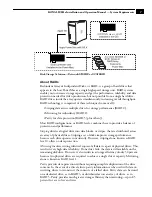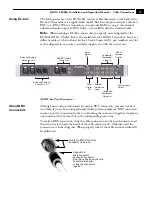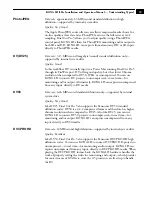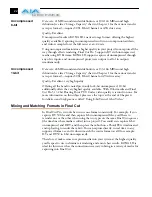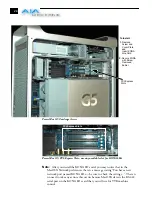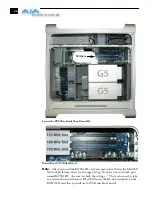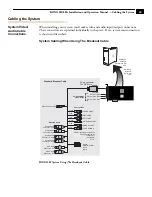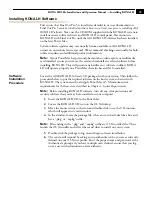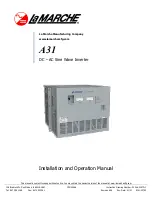
20
HDV
Data rate:
19 MB/second high definition720p, 25 MB/second high definition
1080i—supported by internal system drive
Quality:
Excellent
KONA LH supports and accelerates the Final Cut Pro HDV Codec. You can use
KONA LH to convert HDV projects to uncompressed—in real time—for
monitoring and/or output. KONA LH can capture uncompressed from any
input, directly to HDV media. The KONA LH advanced scaling engine takes the
native frame (long GOP 1440 HD) and outputs it via hardware—in real time.
Precision AJA circuitry re-sizes the video to proper 1920 x 1080, providing quick
playback of HDV captured by Final Cut for monitoring and recording.
HDV captures HD images via MPEG2 compression and allows for recording the
signal to a MiniDV tape. This MPEG2 compression is similar to a DVD
(although DVD is a program stream vs. HDV’s transport stream and HDV uses a
constant bit rate whereas DVDs use variable bit rates). The issue for post
production is that the HDV transport stream is based around a long-GOP
structure (group of pictures) which produces images based on information over a
section of time, via I, P and B frames; Intraframes, predicted frames and bi-
directional frames. Formats that do not use this scheme treat frames as individual
units, as in the progressive formats where a frame truly is a frame, or as interlaced
frames where two fields create the image. Sometimes we refer to these formats in
contrast to MPEG formats, as I-frame formats where frames can be easily defined
as individual.
Since the frames of HDV have the long GOP structure to define them, herein lies
the problem for post-production; how can we work with the material if we must
know what lies before, after and during? Luckily, the transport stream MPEG2
can be transmitted over IEEE1394 (aka FireWire). This means that the
compressed HD material can be transferred into systems with the appropriate
hardware and software (for example, a G5 with Final Cut Pro 5). While this
seems like a simple solution for post-production, it means that the footage must
be brought into the system as a rather heavily compressed format and that the
computer must continue to work with the material as a MPEG2 transport stream,
which is incredibly processor intensive for the computer.
How does the AJA KonaLH/LHe card connect to HDV and digitize material to
uncompressed HD files for editing—or at the very least, to a lightly compressed I-
Frame HD format? The answer to this is provided in a feature common to many
HDV devices: analog HD output via component video. The component
connectors on JVC cameras and decks, along with Sony cameras and decks, allows
for the output of the long GOP MPEG2 data as a standard HD video format such
as 720P, as with the JVC products—or 1080i as with the Sony products.
Since the KonaLH/LHe cards have the ability to digitize analog HD signals, the
analog component output of the HDV devices can simply be connected to the
KonaLH/LHe inputs. Note that HD signal cannot be transported over composite
or S-Video (Y/C) cables, so the HDV device must have an analog component HD
output. The KonaLH/LHe also has the ability to ingest analog audio, so the
analog audio outputs of the HDV devices can be sent to the Kona card as well.
(Also note that these analog audio outputs on the HDV devices are usually
unbalanced RCA connections where the KONA card uses balanced XLR style
Summary of Contents for KONA LH
Page 1: ...Installation and Operation Guide Models LHe and LH September 25 2007 ...
Page 4: ...iv ...
Page 8: ...4 ...
Page 22: ...14 ...
Page 23: ...1 15 KONA LH LHe Installation and Operation Manual In This Manual ...
Page 24: ...16 ...
Page 45: ...1 37 KONA LH LHe Installation and Operation Manual Genlock and Your System ...
Page 46: ...38 ...
Page 90: ...84 ...
Page 94: ...A 4 ...
Page 100: ...I 6 ...


